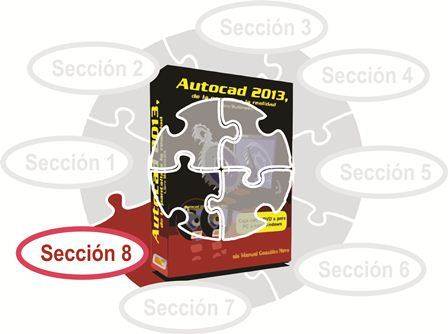3D Drawing with AutoCAD - Section 8

35: VISUALIZATION IN 3D
In the topic we studied in the 14 chapter, we simply took advantage of the Zoom and Framing tools to create a view and then used the View Manager to save that view for reuse, similar to the SCP. In the same dialog box you can see an eyebrow that shows all the default views for 3D objects, which are part of the same list.
Now we must consider other tools that serve to navigate the 3D models, considering what we mentioned above: that each view of the model can be recorded for reuse later. Let's see these tools to move in three dimensions in Autocad.
35.1 Orbita 3D
The orbit tool allows an interactive visualization of three-dimensional models. It has three variants: Orbit, free orbit and continuous orbit. To understand how this command works, let's first use the free orbit. Imagine that your 3D model is fixed in the center of a glass sphere and that it is rotating that sphere with your hands. Suppose also that this sphere passes through the center, 3 axes orthogonal to each other, as the Cartesian axes: one horizontal, one vertical and a third perpendicular to you, always with respect to the current view of the model and regardless of the SCP that is Using. So you can restrict the movement of the sphere on only one of the axes, whichever you wish, by rotating it. Although you can also rotate the sphere freely.
The command works the same way. When activating Free Orbit, a circle with marked quadrants shows the object in its current view; This model can be moved with the cursor. If you move the cursor outside the circle, the movement of the model will be restricted to the axis perpendicular to the screen. If we move the cursor from one of the two vertical quadrants, then the movement restricts the horizontal axis. The horizontal quadrants rotate the model on the vertical axis. Moving the cursor within the circle allows the model to rotate freely. Finally, you can apply the command on a particular object, during the orbit movement all other objects will temporarily disappear from the screen.
In previous versions of Autocad, the Orbit command was called "Constrained Orbit". This is because it is restricted to a 180° rotation of the XY plane. If we add the fact that it does not also have the circle and the quadrants that mark the imaginary axes, it is preferable, at least for me, to use Free Orbit over Orbit.
For its part, the Continuous Orbit command generates an animation of the 3D model depending on the direction in which we move the cursor. That is, we use the cursor to give it a first impulse, when we release the mouse, the model remains in constant movement until we click again or press “ENTER” to finish the order. With a little practice you will find that a drastic movement of the mouse will give a greater boost and the orbit animation will be faster. Smooth movement will result in a slower animation.

